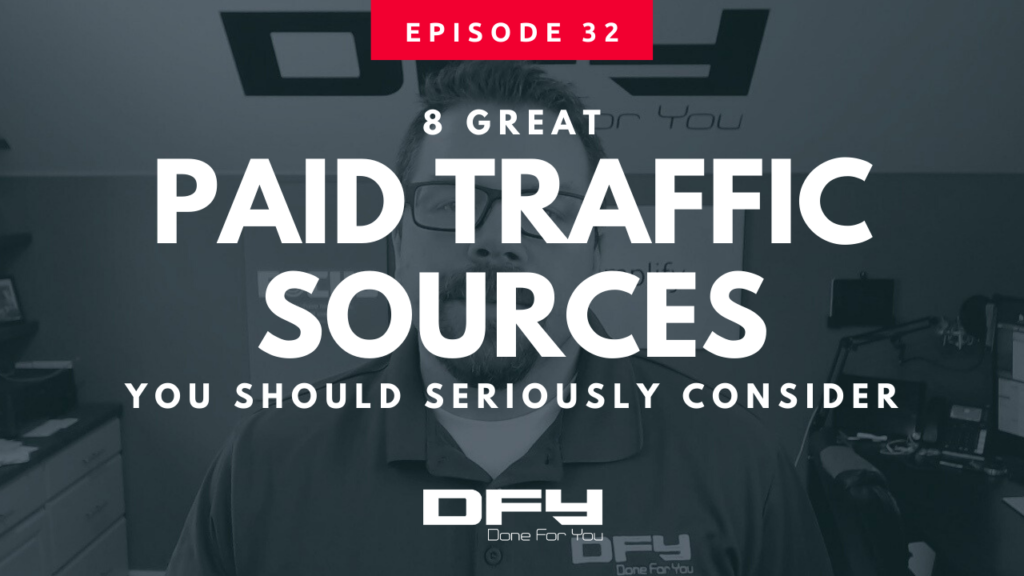Regarding paid traffic sources, Facebook and Google are the indisputable big bad boys on the media buying scene; several other great paid traffic marketing channels are available to advertisers and marketers if you know where to look.
To give you a little bit of history on me, though... And my convoluted journey into paid traffic marketing.
I've been doing this for 14 years and long thought I was allergic to paid traffic marketing. I gamed the search engines as hard as I could game them.
Despite going through all the paid traffic training and courses, I couldn't get myself to spend money on traffic...
I mean, we had EIGHT of the TEN rankings on the first page of Google for one keyword phrase back then. It is pure domination. Then Google got wise and updated their algorithm - i.e., the Penguin and Panda updates.
Those of you who have been around for a while know what I'm talking about because everybody's dreams were shattered at the exact moment, all across the globe, when those updates went live.
I had websites that were making $20,000 a month that just disappeared. The hat was the reality of those updates. Since then, I became very wary about building a business foundation on anything I didn't directly control.
Search engine traffic is fantastic, but if and only if it is thought of as a bonus. Our business should be built on paid advertising that you control and not 100% built on free traffic and things you luck into.
Now, content marketing and content optimization have changed. To rank and get quantifiable free traffic (when all you're doing is organic SEO), you need:
- Hundreds of blog posts
- Hundreds of videos on YouTube
- Hundreds and hundreds of pieces of content to get any economy of scale in terms of free traffic.
That content needs to be optimized to the hilt. t needs to be shared socially. Here are many things that make SEO and search rankings very difficult anymore.
So we turned to paid traffic marketing to scale our client's businesses.
With paid traffic marketing, you set up an ad, it gets approved in a couple of hours, and it gets turned on... Then you're live!
After that, it's just ensuring the ad campaign and automated sales funnel are optimized. It's reading the analytics, making sure people are moving through the inbound marketing funnel the way they should, opting in, purchasing from a sales video, converting in the shopping cart, and getting fulfilled as a customer.
According to Ana Gotter of Adespresso, the average CPC (Cost Per Click) of Facebook Ads for all countries is about $0.97.
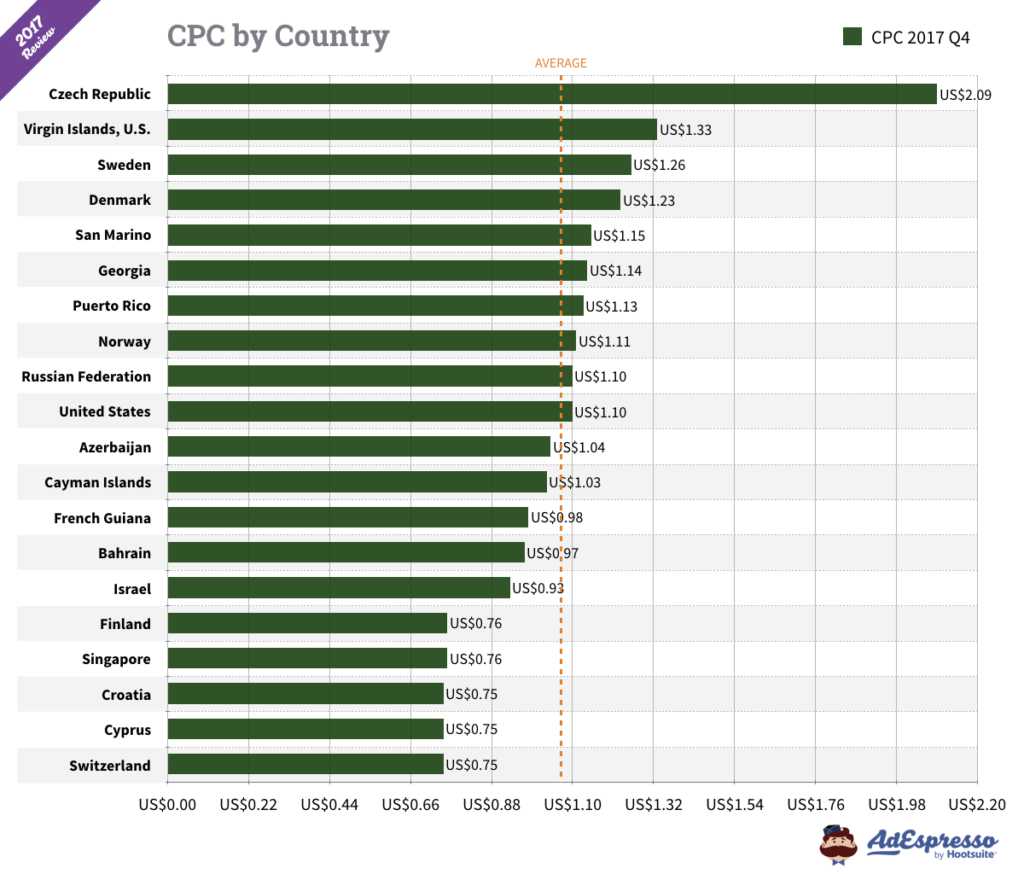
Of course, it's higher for some countries, while the CPC is lower for others.
If you are in countries that do see a higher CPC for Facebook (and likewise for Google), you'll do well to have alternatives. Furthermore, you are out of luck if your business ads do not comply with Facebook's or Google's Ad policies.
Also, for discerning business owners and tight-fisted marketing budgets, there's a world of paid traffic sources outside of Facebook Ads and Google AdWords that you should consider. Also, a worthy addition to your arsenal are well-crafted promotional products...
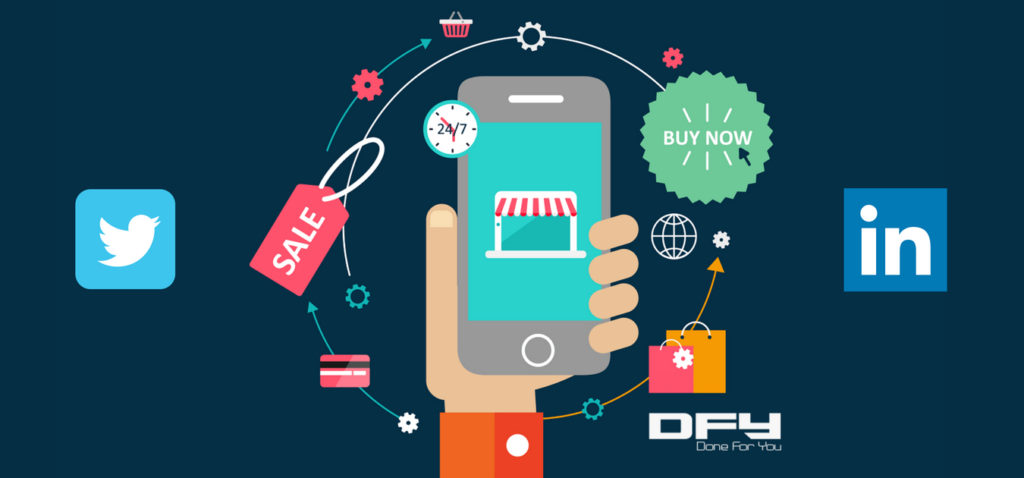
We've got to get into Facebook and Google, though...
1. Facebook Advertising
With most of our clients, we're BIG on Facebook advertising. We believe Facebook advertising is one of the best-paid traffic sources because it gives you instant access to excellent prospects and buyers. It is not as good as it used to be, though...
Facebook ads are much more expensive than they used to be, even a year ago. They took away a lot of the targeting we used to use. There have been many ways that they've made the platform less reliable than previously.
However, Facebook advertising is still fantastic, BUT only if you use video campaigns. Ideo views campaigns are our bread and butter. I just recorded a little Facebook Video Ad example here. e create video view campaigns or video conversion campaigns for our clients, and there are two things we are looking for:
- Cheaper clicks from video view campaigns
- A quick way of putting together lookalike audiences and retargeting audiences
Facebook's Video Ad Campaigns are great for both. If somebody watches 50% or more of the video, they get put into an audience, and we can build lookalike audiences based on that.
That is why we love video campaigns. We run video campaigns for our clients, especially for cold traffic ads. Sometimes, it will be cold traffic as a video view campaign, and then the retargeted ad will be image-based. It just depends on as much video as we can run.
2. Google Advertising
About a year and a half ago, we started pushing our clients to move some of their ad budgets off of Facebook because ad approval and overall campaign effectiveness started getting convoluted. If you've run Facebook Ad Campaigns in the last few years, you know it's much more expensive now than it was.
So, we moved clients back to our Google Ad Management Service.
Now, Google is our number two platform.
Google Ads represent a different type of traffic to advertisers.
Facebook Advertising is 100% interruption-based. Somebody is scrolling through their newsfeed, and then they're interrupted by your ad video/ad image/story, they click it, and then they're off and going down your automated sales funnel.
It's 100% interruption-based, and Facebook relies on interest targeting to ensure it serves the ad that people want to see.
Google Advertising is keyword-based.
So, if somebody goes to Google and types a query into the search box, they hope to find an answer to their problem. They're interested in a solution. Your ad pops up, and they assume that Google showed them that ad because your company fixes issues like theirs.
So, everything on Google search is intent-based.
Somebody has a problem; they search for an answer, and then 'boom,' your ad shows up.
Google Advertising is a solution-based ad network instead of Facebook Ads, which is interruption-based.
... Which means two different types of traffic.
Neither is better. Google tends to be a bit more expensive, usually on a fully qualified lead basis, than Facebook is... But you typically get a better lead on Google. It depends on what you're looking for.
I think the best strategy is to do both. You have a Google campaign and a Facebook campaign, and then you're hedging your bets by leveraging two of the biggest ad platforms in the world.
And then, we add a third platform for retargeting.
3. Banner Retargeting
One platform we use for retargeting ad management clients is Adroll.
Adroll is a retargeting network. It's all they do - banner retargeting.
Inside Adroll, you throw your banners up, and then they serve the banners to your retargeted audience through 70 or 80 other ad networks... Your banner ads appear when somebody has your cookie in their browser and visits most other websites online.
Now, Adroll also has Facebook retargeting advertising. e generally do not do Facebook retargeting in Adroll. It's cool, but the features pale compared to what's available inside FB.
... The nice thing about Adroll is it's an independent platform. Even if Facebook were to shut down your ad account, you wouldn't lose all your retargeted data. You'll still have it in Adroll.
4. LinkedIn Advertising
The following paid traffic source that is useful for this article is LinkedIn.
LinkedIn has some excellent new retargeting behaviors that are coming out, like retargeted InMail. When somebody lands on your website, you can send them an InMail a few days later.
LinkedIn advertising is also interruption-based, but the prospect you're getting in front of on LinkedIn is so good when selling a B2B product. The downside is LinkedIn Advertising is expensive. d costs start very high per click, which means it might cost you 18 or $20 to get an email lead. Not all the different from radio and TV advertising prices!) On Facebook, it might cost $3 to get an email lead.
If your business serves other businesses, you are lucky with LinkedIn Advertising. LinkedIn has been quietly building a massive and active database of professionals, employees, and business owners for a long time.
While LinkedIn appears largely passive (compared to Facebook, Instagram, and Twitter), it's the most extensive database of working professionals, company founders, and self-employed professionals worldwide.
LinkedIn Ads has a self-serve ad platform allowing you to launch campaigns and efficiently target your relevant buyer persona. While LinkedIn might seem expensive at first glance, using appropriate sales funnels, staying tight with your budget, optimizing, and testing will get you the desired results.
5. Twitter Advertising
While Twitter isn't like Facebook regarding the "stickiness factor," it's still an extensive and active network.
Twitter Advertising is as good as new since there aren't many advertisers on the platform yet, meaning there's a large inventory available for you to do paid advertising (just how many personal Twitter feeds did you think you could reach?).
Twitter Advertising was also the pioneer of the Facebook Lead Generation type campaigns where all that Twitter advertisers have to do after they see your ad (or offer) is to click on a button to sign up as a lead.
6. Mobile Advertising
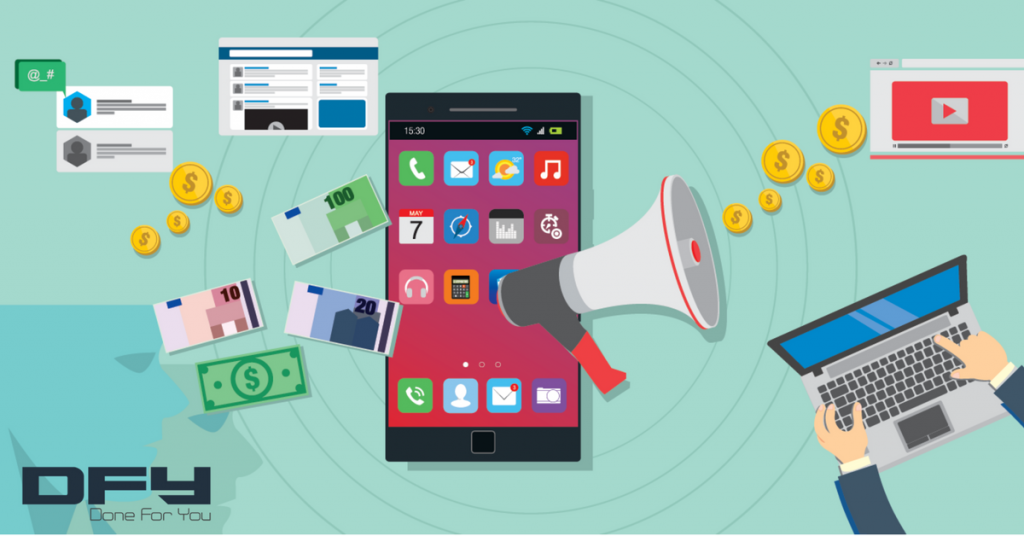
Almost all of your customers have a mobile device. Even for Facebook, Google, Instagram, LinkedIn, and Twitter, a large percentage of engagement -- with ads or otherwise -- happens on mobile.
But that's not what we are talking about. Social, mobile PPC is one thing, but there's more mobile advertising inventory available than you'd know what to do with.
Large mobile advertising networks such as Chartboost, AdMob, Adcolony, Leadbolt, and Unity Media are available -- with their inventory of mobile publishers (apps, games, mobile websites, etc.).
You also have access to real-time bidding networks for mobile; self-serve mobile ad platforms, such as PocketMath, and so much more are there for you to use if you want to.
7. Native Advertising & Native Traffic
Two of the most extensive native ad networks, or native traffic sources, are Outbrain and Taboola.
Outbrain and Taboola just published that they will merge, creating a vast ad network for native ads.
If you're not familiar with native ads... Native ads appear at the bottom of blog posts and articles disguised as 'related content.' They look like featured content or related posts on a blog.
One of the nice things about Outbrain and Taboola is that their policies are pretty lax. You can get some things approved in Taboola and Outbrain that you can't get approved elsewhere.
At the time of writing this, native advertising has also gone on to mobile in a big way and now has more formats than ever.
You could quickly get started with native advertising by promoting content, a blog post, or an article to get more targeted traffic instead of an actual ad.
As a paid traffic source, native advertising has potential simply because ads look like "article recommendations." Popular native advertising self-serve networks include Outbrain, Revcontent, Taboola, and Gravity.
8. Locial Forum Advertising
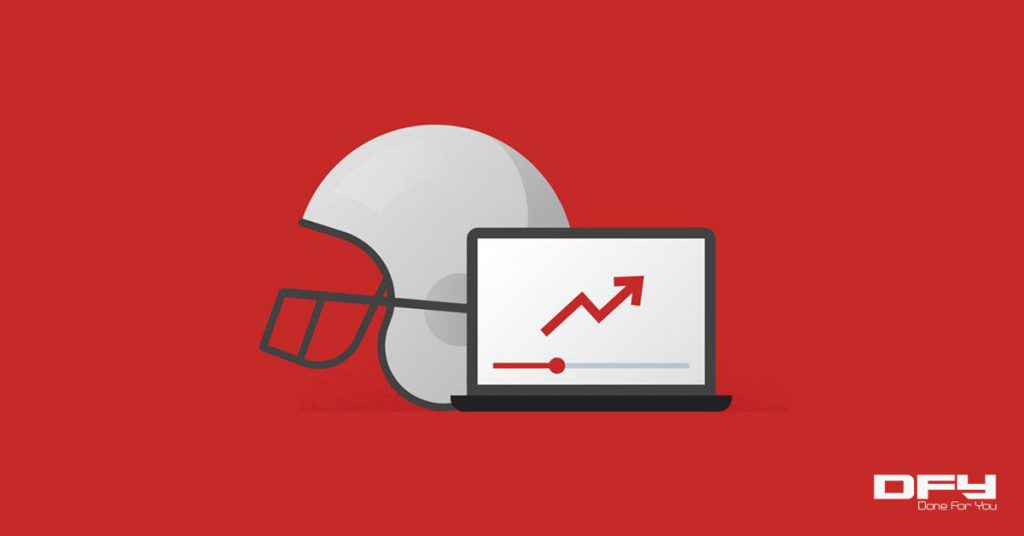
Suppose you've ever tried to get on Reddit (or one of its subreddits) and post a link to an article or a blog post in the hope of getting some traffic. In that case, you know just how arrogant online community forums and communities can be if you try to do that without first providing value.
Using online communities and forums like Reddit and Quora requires much time, effort, and altruism.
But with social forum ads such as Reddit and Quora ads, you don't have to spend time writing or trying to build a community. They must use their respective ad platforms and have access to millions of like-minded, passionate people.
The key to making your paid traffic sources work -- regardless of which traffic source you choose -- is to use proper sales funnels along with a judicious application of design, copywriting, and more.
Would you like to get on a call to discuss your AdWords Management, Funnels, or Marketing? Get in touch with us now!
Which platforms or paid traffic sources will you work with next?
So, if you have any questions on driving traffic managing ad budget and want us to do it for you, click below!
